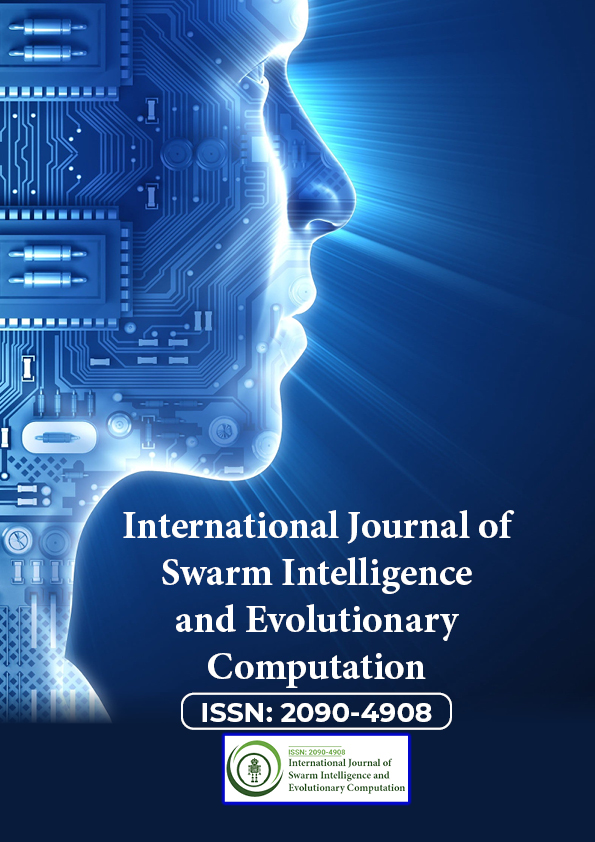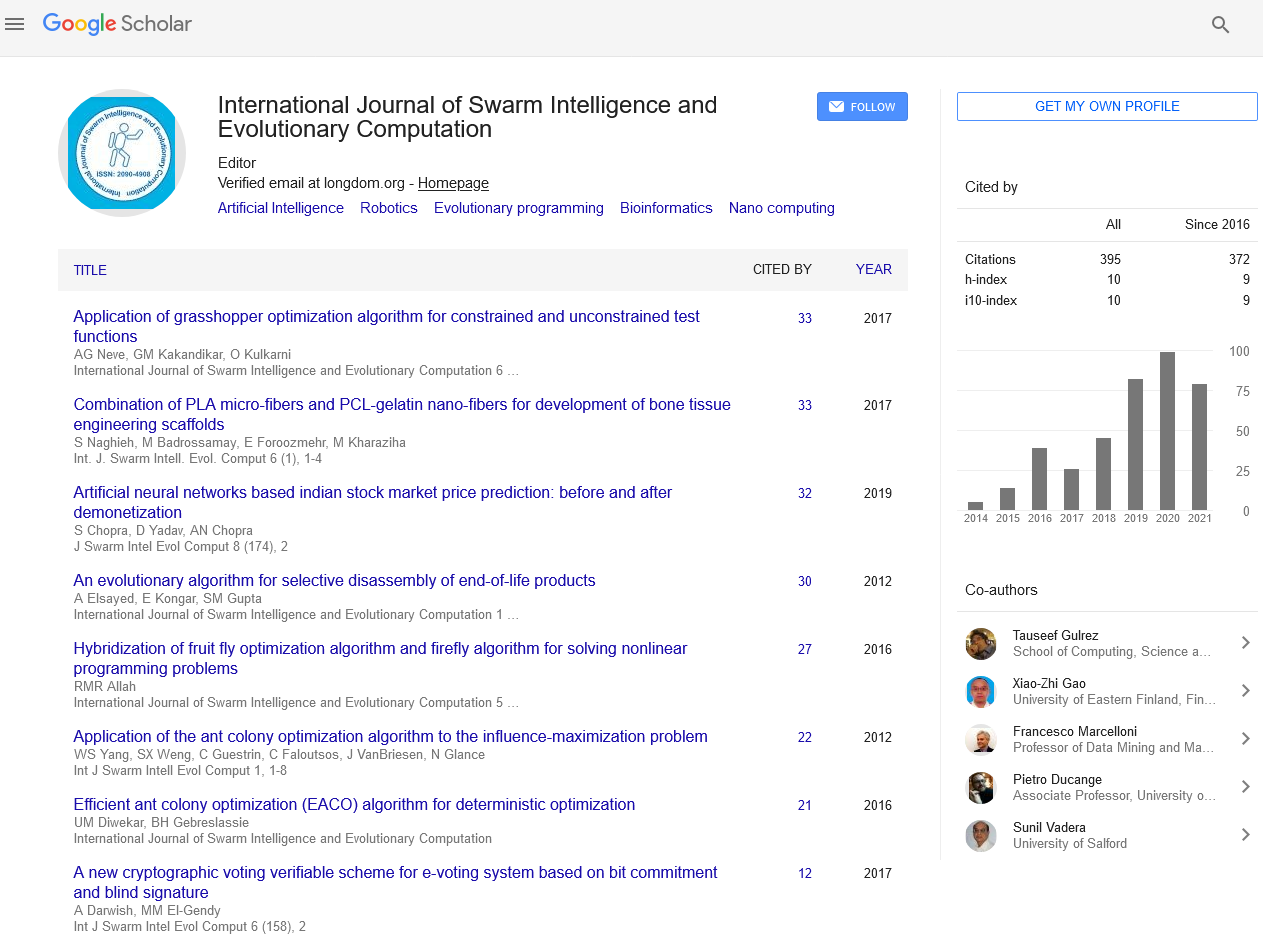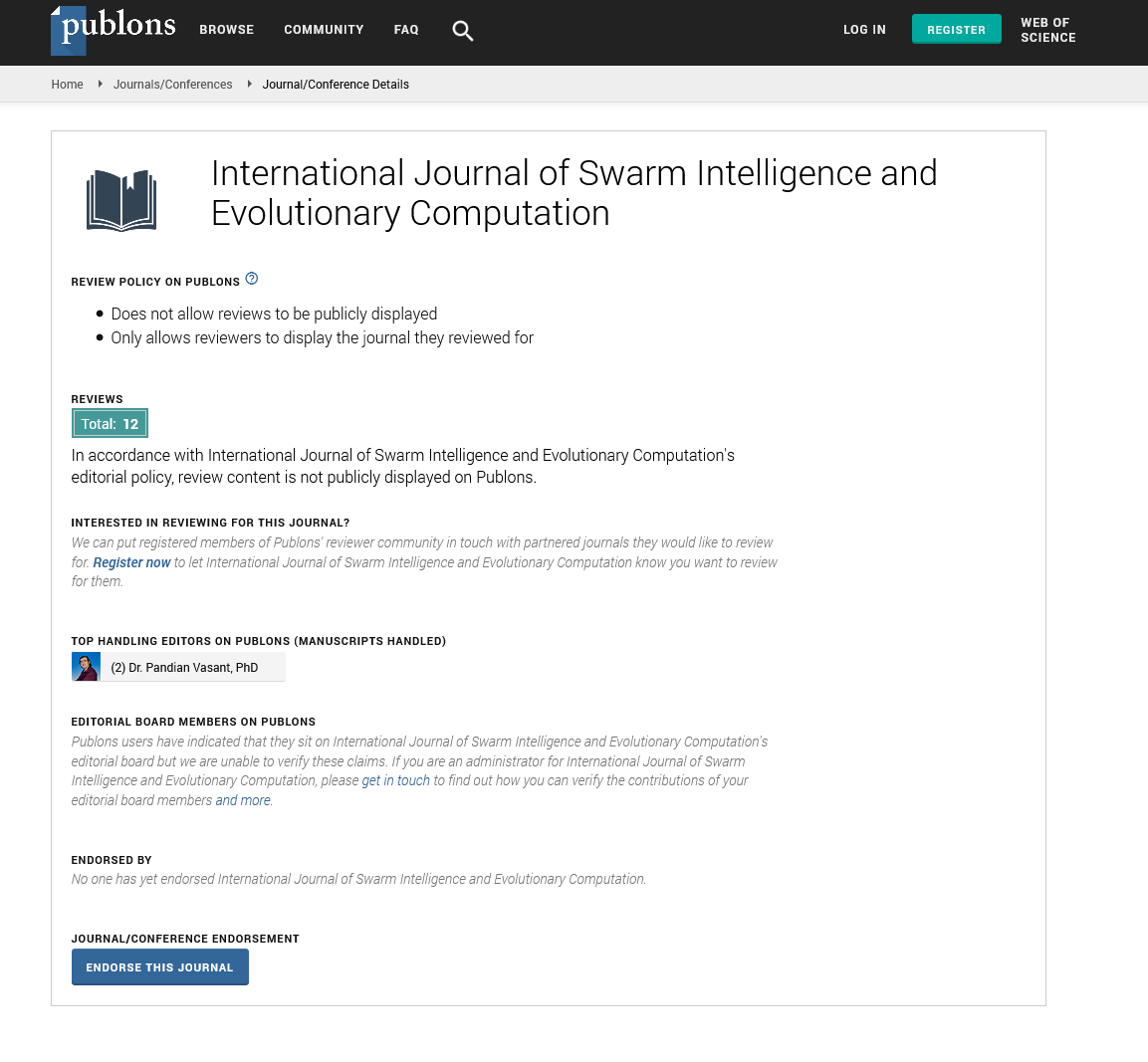Indexed In
- Genamics JournalSeek
- RefSeek
- Hamdard University
- EBSCO A-Z
- OCLC- WorldCat
- Publons
- Euro Pub
- Google Scholar
Useful Links
Share This Page
Journal Flyer

Open Access Journals
- Agri and Aquaculture
- Biochemistry
- Bioinformatics & Systems Biology
- Business & Management
- Chemistry
- Clinical Sciences
- Engineering
- Food & Nutrition
- General Science
- Genetics & Molecular Biology
- Immunology & Microbiology
- Medical Sciences
- Neuroscience & Psychology
- Nursing & Health Care
- Pharmaceutical Sciences
Commentry - (2025) Volume 14, Issue 1
Evolutionary Computation: Shaping the Future of Intelligent Problem-Solving
Andrew Vander*Received: 12-Feb-2025, Manuscript No. SIEC-25-28511; Editor assigned: 14-Feb-2025, Pre QC No. SIEC-25-28511 (PQ); Reviewed: 28-Feb-2025, QC No. SIEC-25-28511 (Q); Revised: 07-Mar-2025, Manuscript No. SIEC-25-28511 (R); Published: 14-Mar-2025, DOI: 10.35248/2090-4908.24.14.412
Description
In an era where complex problems demand innovative solutions, Evolutionary Computation (EC) has emerged as a powerful paradigm for optimization and artificial intelligence. Inspired by the principles of natural evolution, EC employs algorithms that mimic biological processes such as selection, mutation, and crossover to find optimal solutions. From engineering to finance, this technique is revolutionizing how we approach problem-solving, making it a critical component of computational intelligence.
Strength of evolutionary computation
One of the most significant advantages of EC is its adaptability to a wide range of optimization problems. Unlike traditional methods that rely on predefined mathematical models, EC is capable of handling dynamic, uncertain, and high-dimensional search spaces. This makes it particularly useful in fields like robotics, supply chain management, and even drug discovery, where problem complexity often exceeds the limitations of classical optimization techniques.
Another crucial factor contributing to the success of EC is its ability to explore multiple solutions simultaneously. Instead of following a single trajectory, as seen in conventional search algorithms, EC evolves a population of potential solutions over successive generations. This diversity enhances global search capabilities and minimizes the risk of getting trapped in local optima-a common challenge in optimization tasks.
Challenges and criticism
Despite its advantages, EC is not without its challenges. One primary concern is computational cost. Since evolutionary algorithms often require a large number of function evaluations, they can be resource-intensive, making them less efficient for real-time applications. Efforts are being made to develop hybrid models that integrate EC with machine learning techniques to enhance efficiency and reduce computational overhead.
Another issue is the lack of theoretical guarantees. Unlike traditional optimization methods, where convergence properties are well established, EC operates through stochastic processes, making it difficult to predict outcomes with certainty. This unpredictability sometimes hinders its adoption in critical systems where stability and reliability are paramount.
Future of evolutionary computation
The future of EC lies in its integration with emerging technologies. Researchers are increasingly exploring the combination of EC with deep learning, reinforcement learning, and quantum computing to develop more robust optimization frameworks. In autonomous systems, such as self-driving cars and smart grids, EC-driven decision-making is proving to be a game-changer, optimizing routes, resource allocation, and energy consumption.
Moreover, EC is playing a vital role in the advancement of bioinformatics, helping scientists understand genetic structures and develop new medical treatments. The synergy between EC and artificial intelligence is opening new frontiers in personalized medicine, where treatment plans are optimized based on an individual's genetic makeup.
Conclusion
Evolutionary Computation stands at the forefront of intelligent problem-solving, offering a biologically inspired approach to optimization. While challenges persist, continued research and technological advancements are driving its evolution, ensuring it remains a vital tool in computational intelligence. As industries embrace EC for solving real-world problems, its impact will only continue to grow, shaping the future of AI-driven decisionmaking and optimization. The potential of EC is vast, and with continued innovation, it will redefine how we approach complex problems in the digital age.
Citation: Vander A (2025). The Rise of Robotic Intelligence: A Revolution in Automation. Int J Swarm Evol Comput. 14:412.
Copyright: © 2025 Vander A. This is an open-access article distributed under the terms of the Creative Commons Attribution License, which permits unrestricted use, distribution and reproduction in any medium, provided the original author and source are credited.


